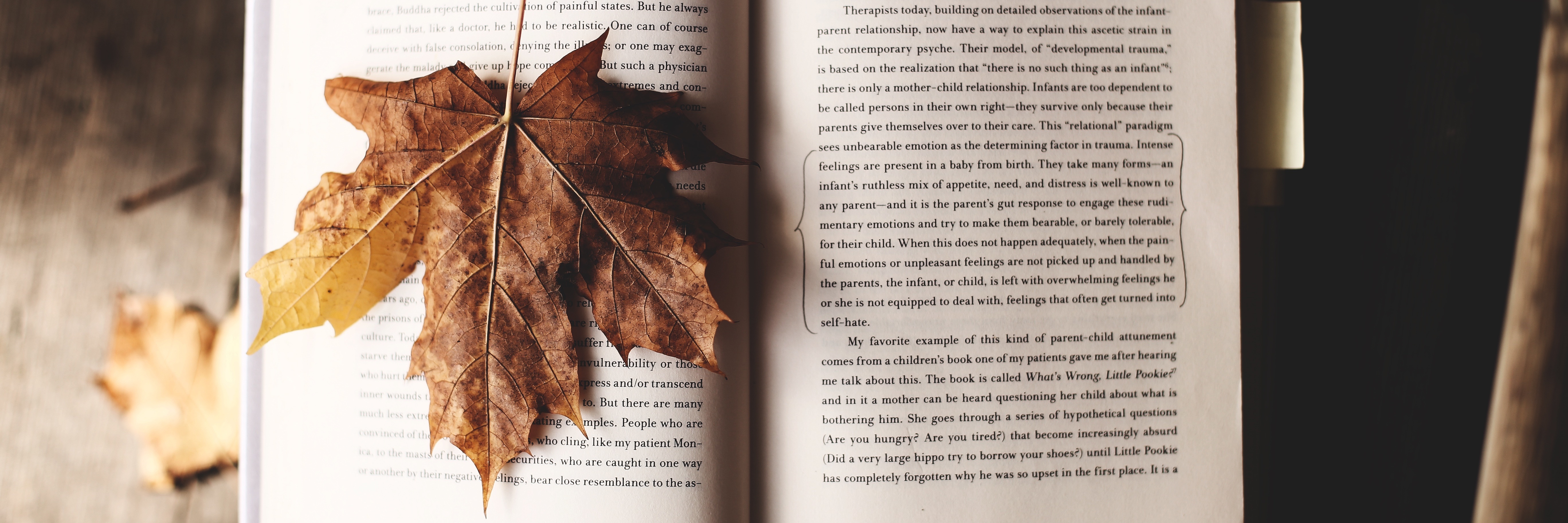Sooner or later, I think every person experiences it: Angst. When a therapist takes a vacation or a trusted loved one is sound asleep, our awareness of and ability to access healthy coping skills can fail. It’s an awful state to be in, and worse still, a lonely existence when less familiar crisis lines and support groups don’t feel like viable options either.
This is when I tend to reach for so-called “Self-Help” Books. Now in my 50s and a lifetime writer myself, my own journey and evolution through mental health care has paralleled that of the genre. As an elementary school, beginning reader, I watched my grandparents swear by the words written by Dale Carnegie (who wrote “How to Win Friends and Influence People”) in 1936; when I went off to college in 1978, Carnegie had been replaced. The words of Dr. Wayne Dyer (in his book, “Pulling Your Own Strings”) filled pages and hours of public television broadcasts, as well as my grandparents’ casual conversations.
The books I’ve come to reach for and depend on seem to surprise people. Sober for 29 years and in my 40th year in a therapist’s care, friends seem to expect 12-step manuals or religious program guides to dominate my self-soothing tomes. Instead, the books I trust are practical, filled with explicit images and demonstrate triumph. I conclude, upon reading them, that I can triumph too, and so I am inclined to not only fall asleep with hope but actually try some of what I’ve read.
Here, then, are 10 books that always save me; each one a treasure so precious to me, I feel honored to even hold them in my hands. Not only have I owned at least three copies of each of these, I’ve given away even more. Never have they failed me; perhaps it’s time to celebrate their life-sustaining blessings.
1. “Supplies” by Julia Cameron (Penguin Random House, 2003).
Though designed to assist writers and artists in identifying and coping with social challenges and archetypes, I saw the people in my life in every section. A very intimate kind of workbook, it helped me trust how I saw people and built my confidence as I dealt with them.
2. “Finding Your Bipolar Muse: How to Master Depressive Droughts and Manic Floods and Access Your Creative Power” by Lana R. Castle (Morrow & Company, 2006).
This imminently practical book is filled with exercises and encouragement. Fun and wise, it teaches how to honor the movement between highs and lows, and find maximum functioning amidst it.
3. “The Body Keeps Score: Brain, Mind and Body in the Healing of Trauma” by Bessel van der Kolk (Penguin Books, 2015).
A scrumptious banquet of intricate but understandable detail fills this book. Van der Kolks’ empathy is palatable and spellbinding, luring one into a deeper and gentler understanding of the brain’s coping and caring.
4. “The Velveteen Rabbit or How Toys Become Real” by Margery Williams (George H Doran Company, 1922).
Though originally published as a children’s book, a very wise college friend gave it to me as a mother figure lay dying of cancer. The defining of what makes any living thing “real” was my first form of comfort, amidst my grieving.
5. “Dark Nights of the Soul: A Guide to Finding Your Way Through Life’s’ Ordeals” by Thomas Moore (Gotham, 2004).
This book not only acknowledges losses other than death, Moore suggests an alternate and more healing perspective on what can feel like powerlessness. While honoring feelings, it managed to help me steer clear of being paralyzed by them.
6. “The Courage to Heal” by Ellen Bass & Laura Davis (William Morrow Paperbacks, 2008).
A massive book on the stages of healing from sexual abuse, the book bravely confronted self-harming as an “unacceptable” coping mechanism. The essay “Don’t Kill Yourself” is a triumphant anchor for everyone who finds it.
7. “Holy the Firm” by Annie Dillard (Harper & Row, 1977).
Spending time alone is recommended as part of many treatment protocols; here, Dillard takes two years. This tiny book reveals the largess life offers Dillard during her time on an island in Puget Sound, inevitably suggesting what we ourselves might find, if we stop running away from and actually listen to the quiet.
8. “Something More: Excavating Your Authentic Self” by Sarah Ban Breathnach (Warner Books, 1998).
What do you do when it seems as if you have everything, yet nothing at all? Ban Breathnach provides the metaphorical stepping stones to our core selves, even acknowledging characteristics of borderline personality disorder (BPD) as a part of some journeys.
9. “Welcome to My Country: A Therapist’s Memoir of Madness” by Lauren Slater (Random House, 1996).
This book chronicles Slater’s journey from being a patient to returning as a clinician. Her spunk is palatable and lit the desire in me to defy stigmas manifesting in all kinds of treatment environments.
10. “100 Places to See Before You Die: A Traveler’s Life List” by Patricia Schultz (Workman Publishing Company, 2003).
As we heal, we wish and dream; this book fuels both. A quick escape from intense feelings and interactions, it’s safe and fun, discovering a new locale every time the book is opened.
These books ease my distress; don’t underestimate the power of your favorites. If they’re part of what keeps you alive, there’s a very good chance your choices will help someone else. Sharing the healing words with others in a way they can actually hold could save a life when clinicians aren’t looking…
When someone is all alone, let a book become a life preserver.
If you or someone you know needs help, visit our suicide prevention resources page.
If you struggle with self-harm and you need support right now, call the crisis hotline at 1-800-273-8255 or text “START” to 741-741. For a list of ways to cope with self-harm urges, click here.
We want to hear your story. Become a Mighty contributor here.
Unsplash photo via Ksenia Makagonova

